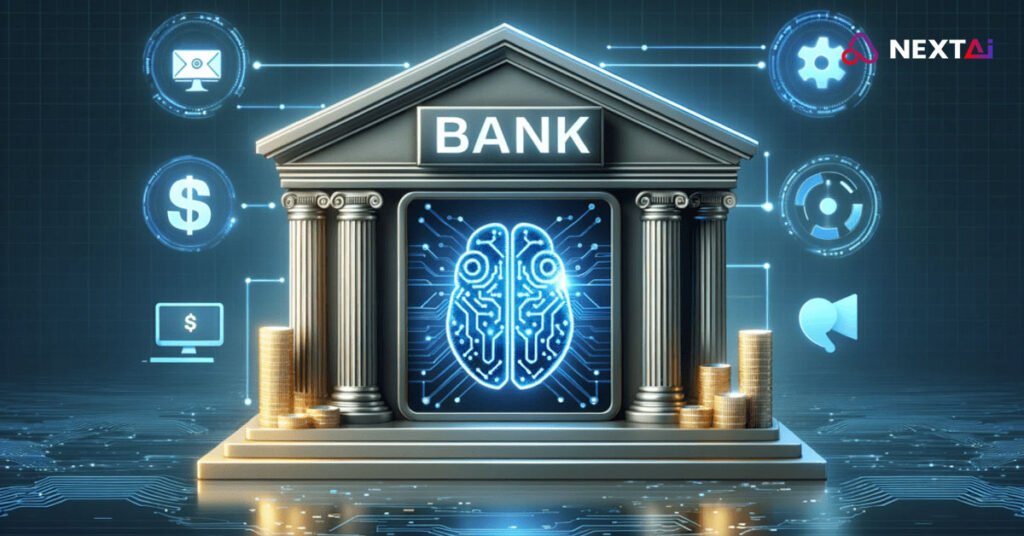
How AI is Revolutionizing Banking: Transforming Customer Experiences and Financial Services
By Rajiv Rajkumar Bathija | AI in Banking
With over 35 years of experience in technology and 15 years focusing on AI-driven innovation, I have had the privilege of exploring how Artificial Intelligence (AI) is reshaping industries. The banking sector, in particular, has seen significant advancements thanks to AI, with transformative impacts on customer experiences, operational efficiency, and risk management. As a visionary in AI, I am excited to delve into how AI is driving the future of banking, offering smarter, faster, and more personalized financial services.

AI has become an indispensable tool in banking, enabling financial institutions to optimize processes, improve customer interactions, and enhance security. By leveraging machine learning, predictive analytics, and natural language processing, banks are redefining their services to meet the demands of the digital age. Here’s how AI is revolutionizing banking and transforming the financial landscape.
1. Personalized Customer Experiences with AI
AI is enabling banks to provide highly personalized services tailored to individual customer needs. By analyzing transaction data, spending habits, and financial goals, AI-powered systems can offer customized product recommendations, financial advice, and personalized experiences.
For example, an AI-driven banking app can analyze a customer’s spending patterns and suggest savings plans, investment opportunities, or credit products that align with their financial goals. This level of personalization not only enhances customer satisfaction but also strengthens customer loyalty, positioning banks as trusted financial partners.
2. AI-Powered Chatbots for 24/7 Customer Support
Customer service in banking is being revolutionized by AI-powered chatbots that provide instant, round-the-clock assistance. Using natural language processing (NLP), these chatbots can answer queries, resolve issues, and guide customers through financial processes with ease.
For instance, an AI chatbot can help customers check account balances, transfer funds, or even report lost cards in real time. This seamless support not only reduces wait times for customers but also frees up human agents to focus on complex inquiries, improving overall service quality and operational efficiency.
3. Fraud Detection and Risk Management
Fraud prevention is a critical aspect of banking, and AI has proven to be a powerful tool for identifying and mitigating risks. By analyzing transaction patterns and detecting anomalies, AI systems can flag suspicious activities in real time, helping banks prevent fraud and protect their customers.
For example, AI can monitor credit card transactions for unusual spending patterns or unauthorized access attempts, alerting the bank and customer immediately. Additionally, AI-driven risk management tools can assess creditworthiness, identify high-risk accounts, and support compliance efforts, reducing financial and reputational risks for banks.
4. Predictive Analytics for Customer Retention
AI’s predictive capabilities are helping banks anticipate customer needs and behaviors, enabling proactive strategies to retain customers and enhance satisfaction. By analyzing historical data, AI models can identify customers who may be at risk of leaving and suggest tailored engagement strategies to improve retention.
For instance, if a customer’s activity suggests dissatisfaction—such as reduced transactions or interest in competitor offerings—AI can recommend personalized offers or rewards to re-engage the customer. Predictive analytics enables banks to strengthen relationships and minimize churn, ensuring long-term customer loyalty.
5. Streamlining Loan Approval Processes
AI is revolutionizing loan approval processes by automating credit risk assessments and decision-making. Machine learning algorithms analyze vast amounts of data, including credit history, income patterns, and spending behaviors, to determine a borrower’s eligibility and risk profile with speed and accuracy.
For example, an AI-powered loan platform can assess applications in minutes, providing instant approvals or tailored loan offers based on the applicant’s financial health. This automation reduces processing times, enhances accuracy, and improves accessibility for customers, making the loan process more efficient and user-friendly.
6. Enhancing Cybersecurity with AI
As cyber threats become more sophisticated, banks are turning to AI to strengthen their cybersecurity defenses. AI-driven security systems monitor network activity, detect potential vulnerabilities, and respond to threats in real time.
For example, AI can identify unusual login behaviors, such as access from unfamiliar devices or locations, and take immediate action to secure the account. By providing continuous monitoring and rapid response capabilities, AI enhances the protection of sensitive customer data and ensures the integrity of banking systems.
7. Automating Regulatory Compliance
Regulatory compliance is a complex and resource-intensive process for banks, but AI simplifies it by automating data analysis, reporting, and monitoring. AI systems can analyze transactions for compliance with anti-money laundering (AML) regulations, identify suspicious activities, and generate audit-ready reports.
For instance, AI can flag transactions that meet specific risk criteria, such as large cash deposits or transfers to high-risk jurisdictions, allowing banks to investigate further. This automation reduces compliance costs, enhances accuracy, and ensures that banks meet regulatory standards efficiently.
8. Transforming Investment and Wealth Management
AI is transforming investment and wealth management by providing data-driven insights and recommendations. Robo-advisors powered by AI analyze market trends, customer goals, and risk tolerance to offer personalized investment strategies.
For example, an AI-powered wealth management platform can recommend a diversified portfolio tailored to a customer’s financial objectives and risk appetite. These intelligent systems democratize access to investment advice, making wealth management more accessible and affordable for a broader audience.
Final Thoughts: The Future of Banking with AI
AI is revolutionizing banking by enabling smarter decision-making, personalized services, and robust security measures. From enhancing customer experiences to improving operational efficiency, AI is empowering financial institutions to adapt to the evolving demands of the digital age.
As a visionary in AI, I am inspired by the potential of this technology to transform the banking industry. By leveraging AI, banks can build stronger relationships with their customers, streamline operations, and stay ahead in an increasingly competitive landscape. The future of banking lies in embracing AI to deliver innovative, customer-centric financial services that drive growth and trust.
If you’re interested in exploring how AI can transform your banking operations, let’s connect. Together, we can harness the power of AI to redefine financial services and create meaningful value for your customers.
#ArtificialIntelligence #BankingAI #RajivRajkumarBathija #FraudDetection #CustomerExperience #PredictiveAnalytics #WealthManagement #RegulatoryCompliance
 Author: Rajiv Rajkumar Bathija
Author: Rajiv Rajkumar Bathija
